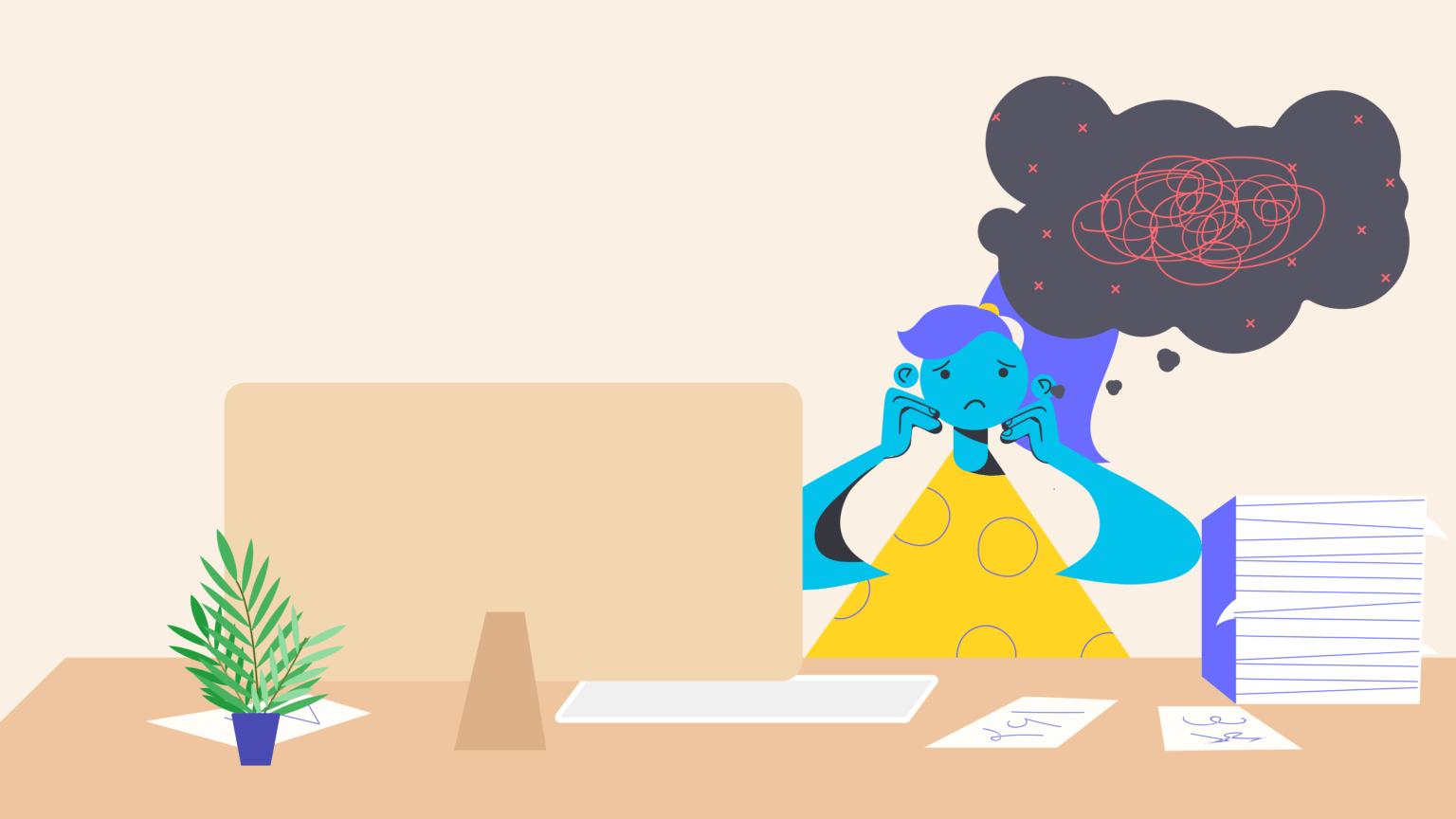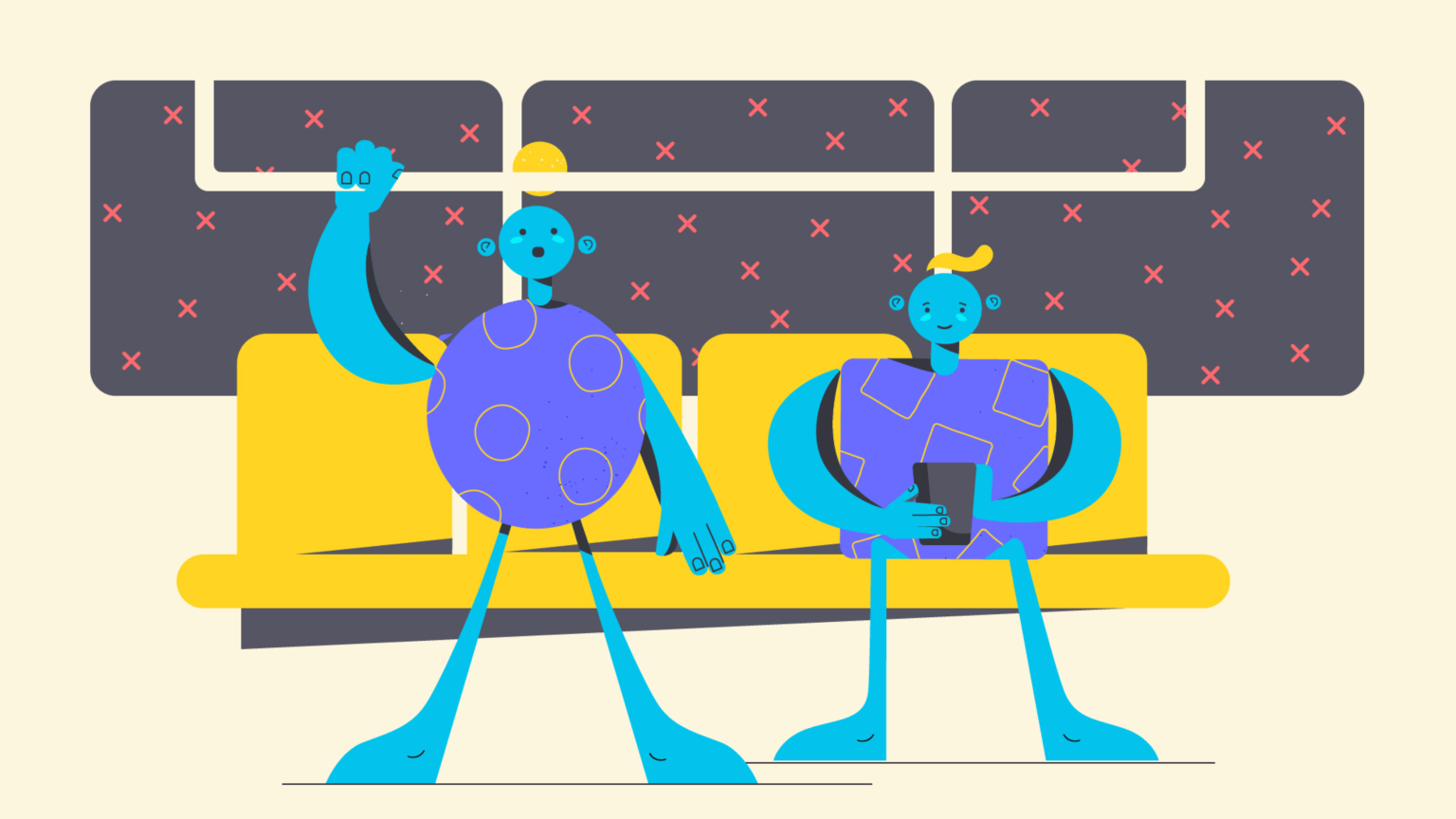
Panik
13. März 2021 — 3 Minuten Lesezeit
Wie werden Angst und Panikattacken langfristig aufrecht erhalten und was kann man dagegen tun?

Wenn man in den gängigen Suchmaschinen eingibt „Was tun bei Panikattacken?“ erscheinen unzählige Tipps, wie „rufe eine Freund:in an“, „trinke Wasser“, oder „mache Atemübungen“. In der Tat sind das (mehr oder weniger) hilfreiche Strategien, um eine Panikattacke so angenehm wie möglich zu gestalten. Ablenkung, Sicherheitsverhalten, Vermeidung und Flucht scheinen somit effektive Methoden zu sein, doch genau diese Verhaltensweisen erhalten Ängste und Panik langfristig aufrecht. Warum das so ist erfährst du in diesem Artikel.
Nach Annahme der Lerntheorie verknüpft unser Angstzentrum primär Reize miteinander und lernt somit aus Erfahrungen. Leider geht es dabei nicht sonderlich rational vor. Wenn du z.B. eine Panikattacke hast, während du gerade in einem Bus sitzt, können sich diese beiden Reize (Bus & Panik) miteinander verknüpfen. Dein Angstzentrum hat also aus dieser Erfahrung gelernt: Busfahren = Panik. Da dein Angstzentrum es lediglich gut mit dir meint und dich schützen will, speichert es Busfahren (das an sich keine Gefahr darstellt) als gefährlich ab und löst somit das nächste Mal wenn du Bus fährst Angst aus, damit du dich in Sicherheit bringen kannst. Das nennt man in der Psychologie klassische Konditionierung.
Folgt auf ein bestimmtes Verhalten nun eine bestimmte Konsequenz, leitet dein Angstzentrum auch daraus eine Lernerfahrung ab. Das nennt man in der Psychologie operante Konditionierung. Wenn du von nun an also vermeidest, Bus zu fahren oder flüchtest sobald du dich unwohl fühlst, folgt als Konsequenz, dass du keine Panikattacke bekommst. Durch diese Erfahrung verfestigt sich die Überzeugung deines Angstzentrums, dass es dich unbedingt weiterhin vor dem Busfahren schützen muss. Dies scheint zunächst einmal vorteilhaft, da Vermeidung/Flucht = keine Angst/Panik. Dadurch wird deinem Angstzentrum jedoch die Möglichkeit genommen, eine korrigierende Erfahrung zu machen. Also die Erfahrung, dass beim Busfahren nichts Schlimmes passiert und es somit keinen Grund gibt, Angst zu haben.
Das gleiche Prinzip gilt für Ablenkung und Sicherheitsverhalten. Hast du z.B. beim Busfahren immer etwas zu trinken oder Medikamente dabei (Sicherheitsverhalten), rufst eine Freund:in an oder machst Atemübungen (Ablenkungen), lernt dein Angstzentrum fälschlicherweise, dass es diese Hilfsmittel braucht, um Angst abzuwenden. Du wirst sozusagen abhängig von deinen Hilfsmitteln. Solltest du diese einmal nicht zur Verfügung haben, bahnt sich erneut die Angst an. Zusätzlich sorgt gerade Ablenkung dafür, dass deine Angst in der Situation wesentlich länger anhält. Du siehst, eine langfristige und nachhaltige Lösung ist das nicht.
Die gute Nachricht ist: Gelerntes lässt sich durch korrigierende Erfahrungen auch wieder verlernen bzw. umlernen! Das geschieht leider nicht von heute auf morgen, sondern erfordert Zeit und aktive Konfrontationsübungen. Aber es ist machbar!
Wenn wir Elemente von unserer Angst-Liste streichen wollen, gilt das Prinzip: Abwarten und nichts tun! Bei einer Konfrontation begibst du dich gezielt in eine für dich angstauslösende Situation und verbleibst in ihr so lange, bis sich deine Angst ohne Ablenkung und Sicherheitsverhalten von alleine beruhigt hat. Du kannst dir deine Angst ein bisschen wie ein Kind vorstellen, dass einen Wutanfall hat. Es hilft vor allem abzuwarten und nichts zu tun. Lass die Panik sich austoben und warte, bis sie von ganz alleine müde wird.
Macht unser Angstzentrum so nun vermehrt die Erfahrung, dass die Panik von alleine abklingt und in den Konfrontationssituationen keine konkrete Gefahr besteht, setzt der Prozess der Gewöhnung (genannt Habituation) ein. Dein Angstzentrum lernt aus diesen korrigierenden Erfahrungen: „Ich habe nichts zu befürchten!“
Mindable unterstützt dich dabei dein Angstzentrum durch gezielte Konfrontation Schritt für Schritt an angstauslösende Situationen zu gewöhnen und Panik langfristig zu reduzieren. Wir begleiten dich in ein unabhängiges Leben – frei von Angst.
Du möchtest mehr wissen? Sieh dir dazu unser Modul „Was hält meine Angst aufrecht?“ in der Mindable-App für Panikstörung und Agoraphobie an. Wie läuft eine Konfrontation ab? – auch dazu findest du ein Modul bei uns in der App.
Wie? Lade Mindable im App Store oder bei Google Play herunter, lerne die Wirkungsmechanismen deiner Angst kennen, und mach dich noch heute auf den Weg der Besserung.